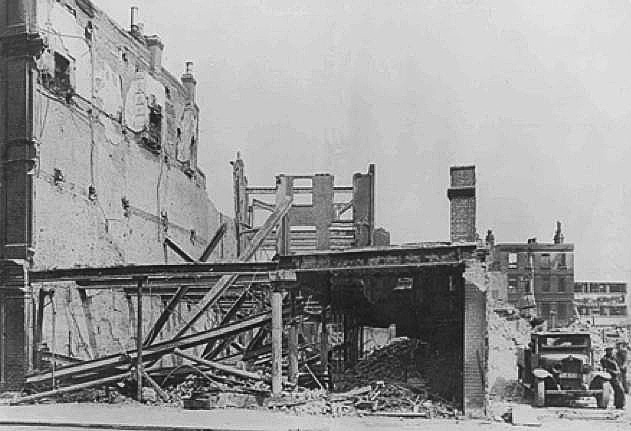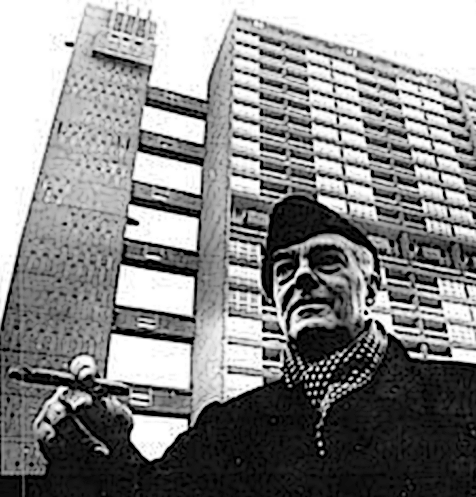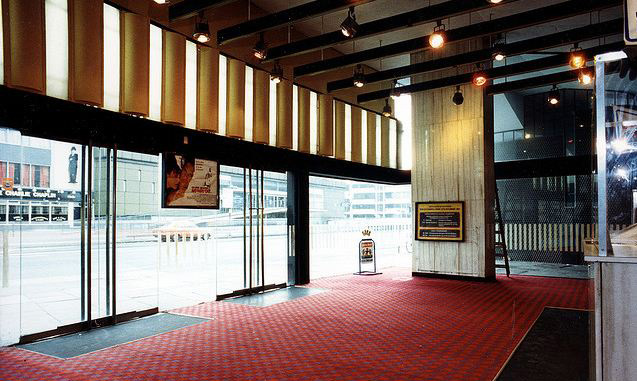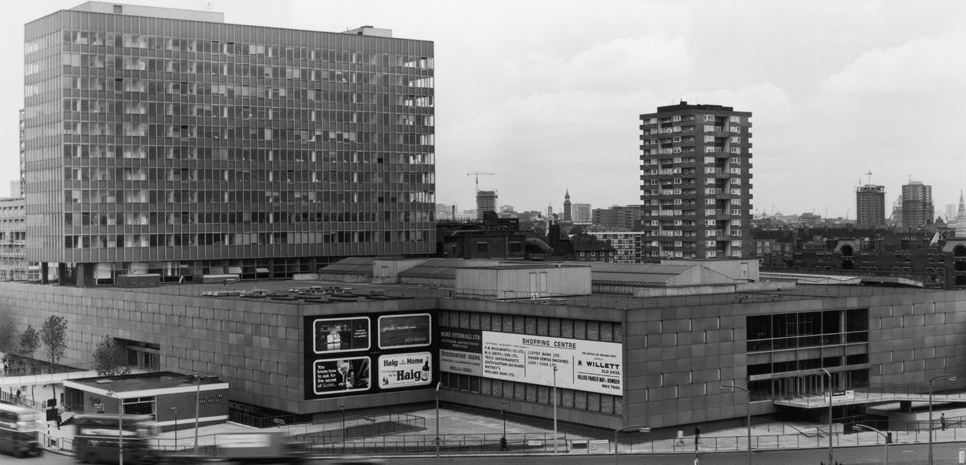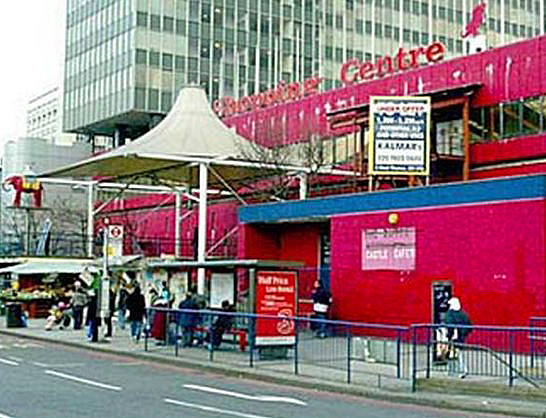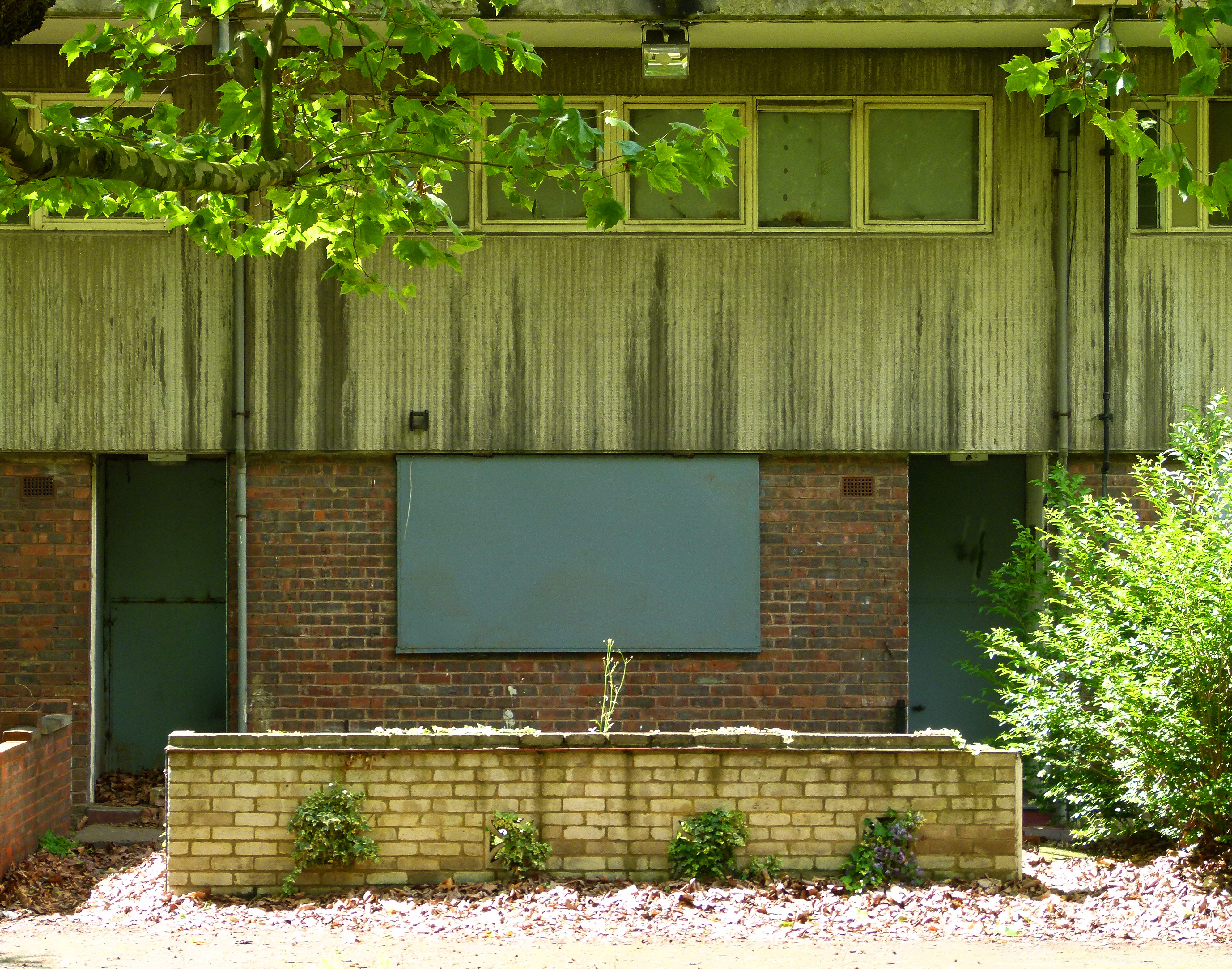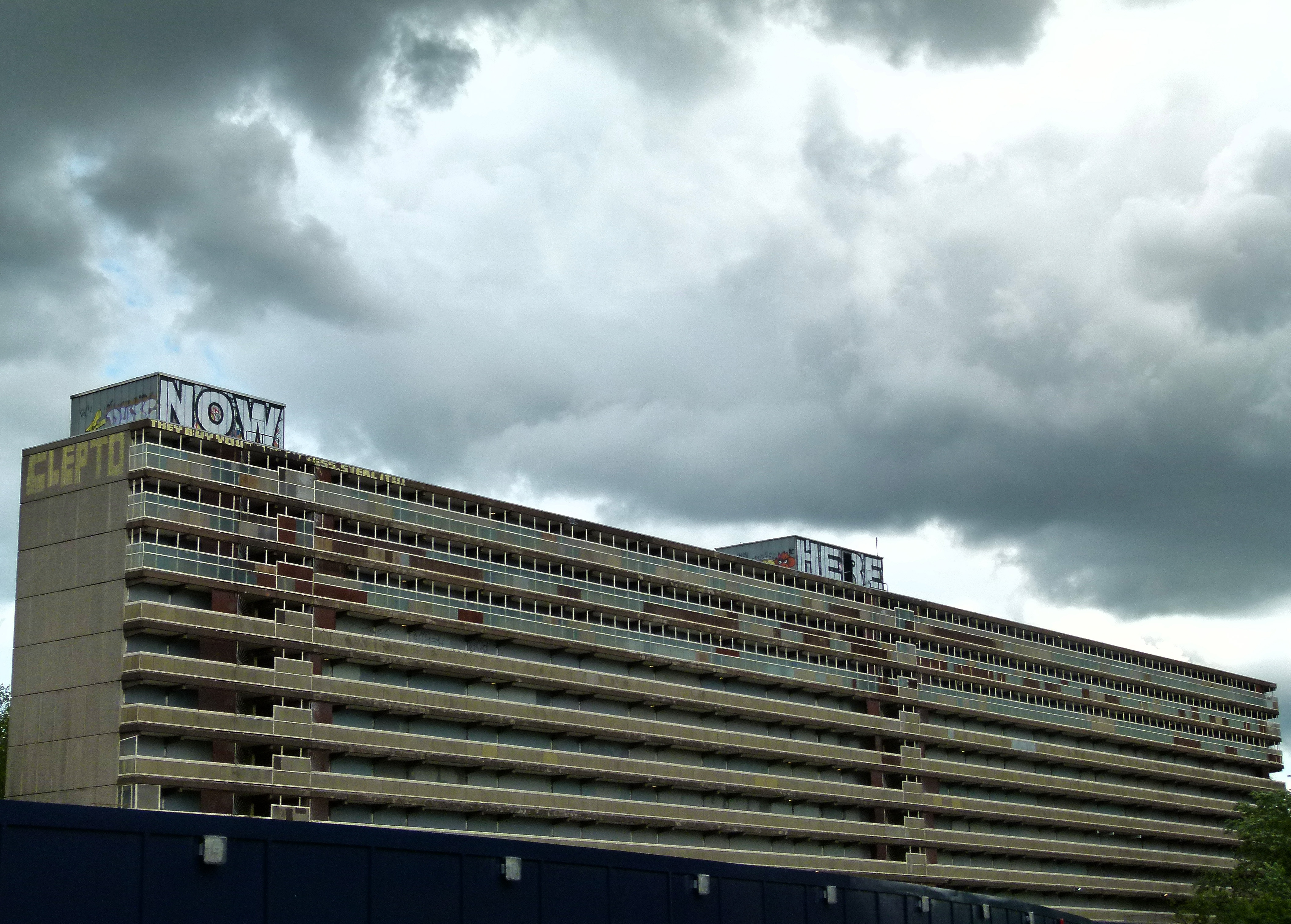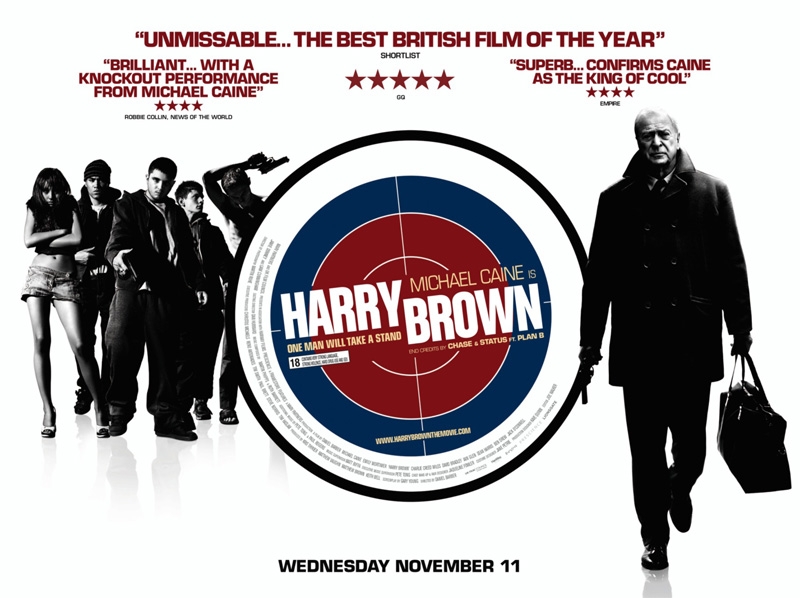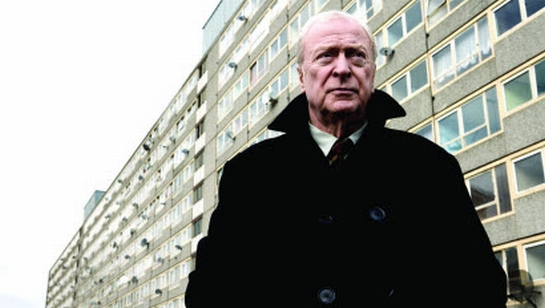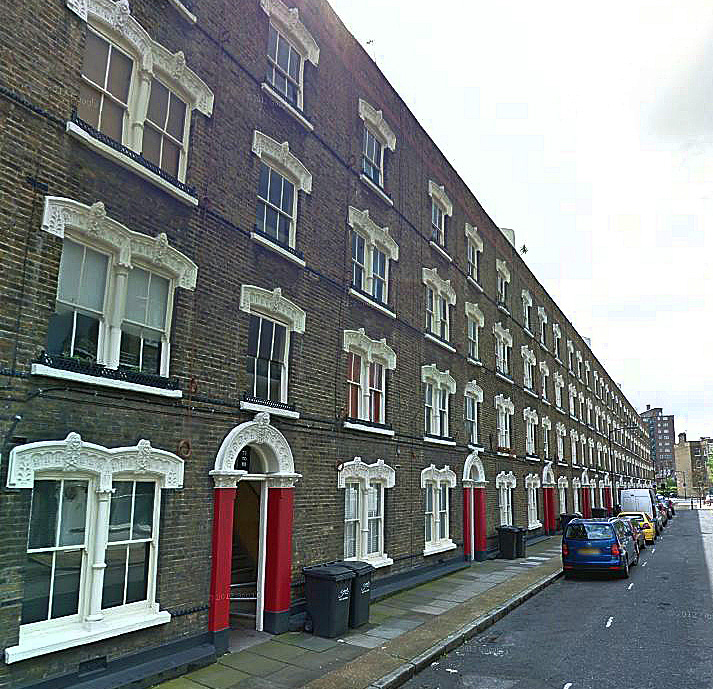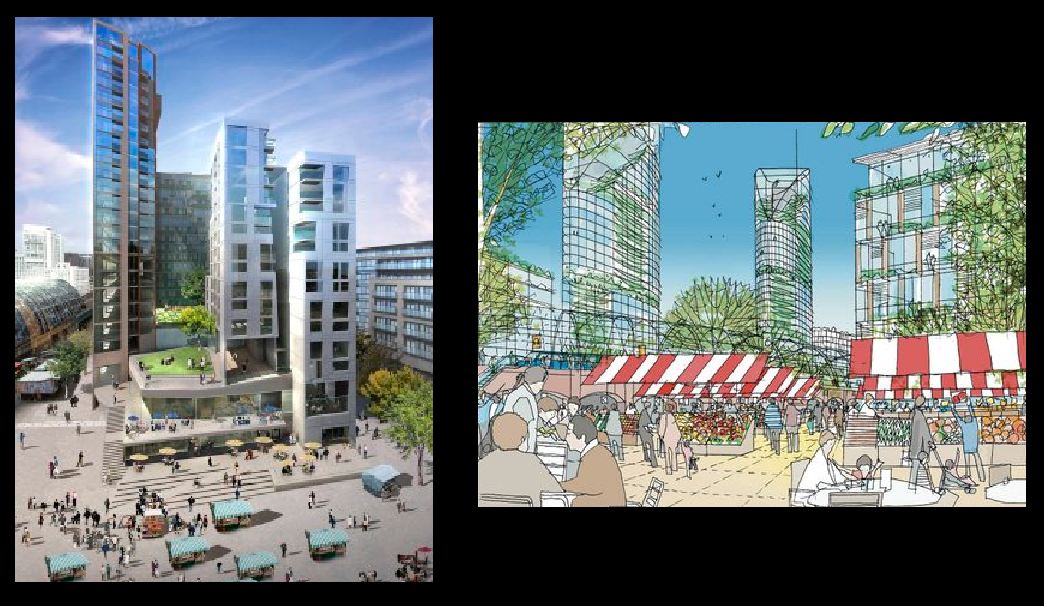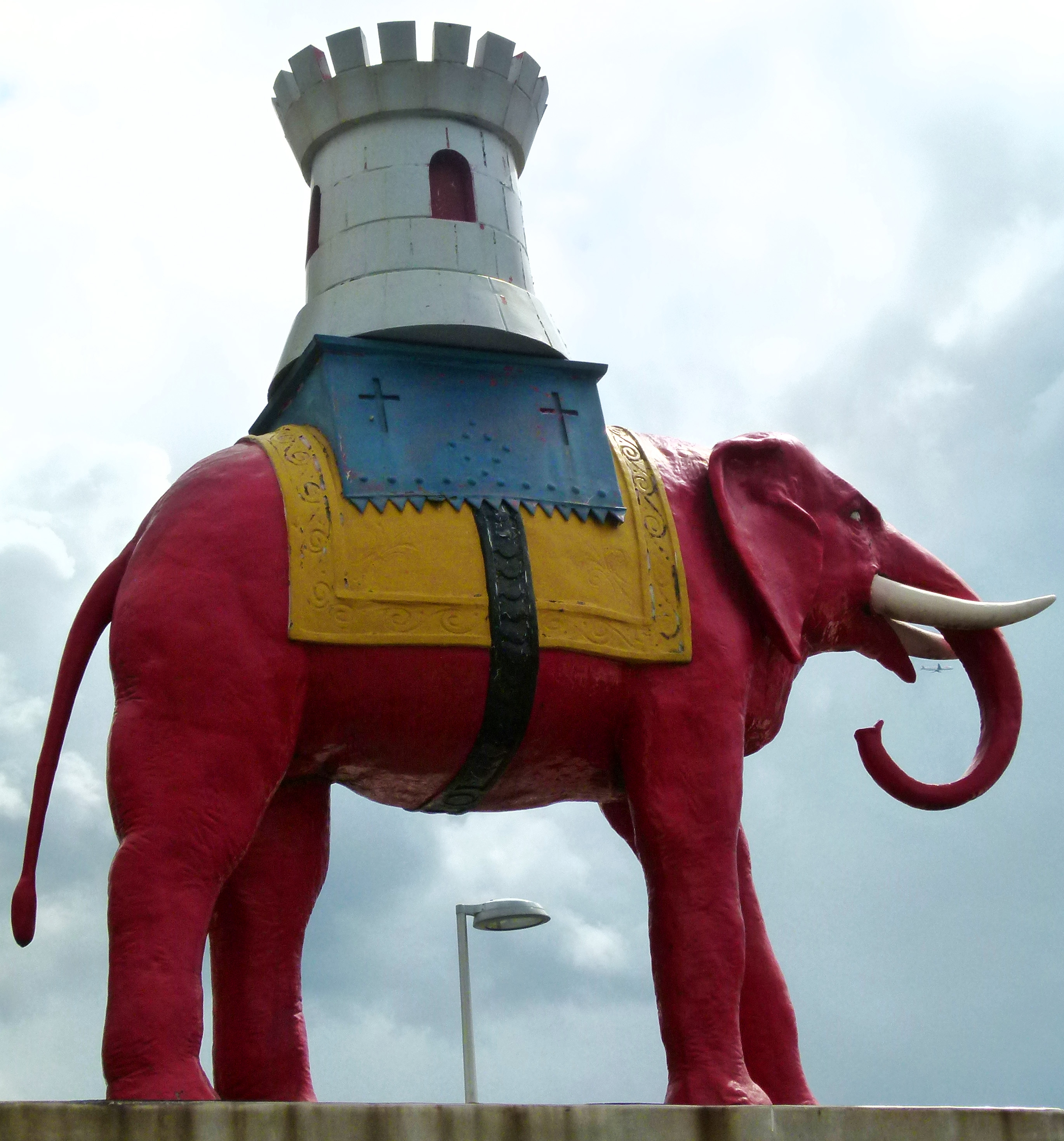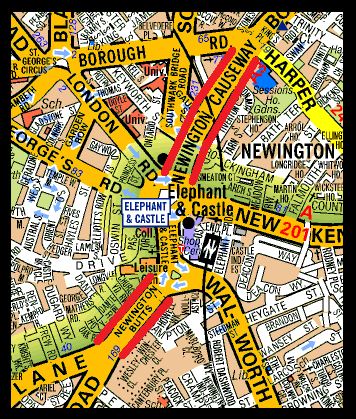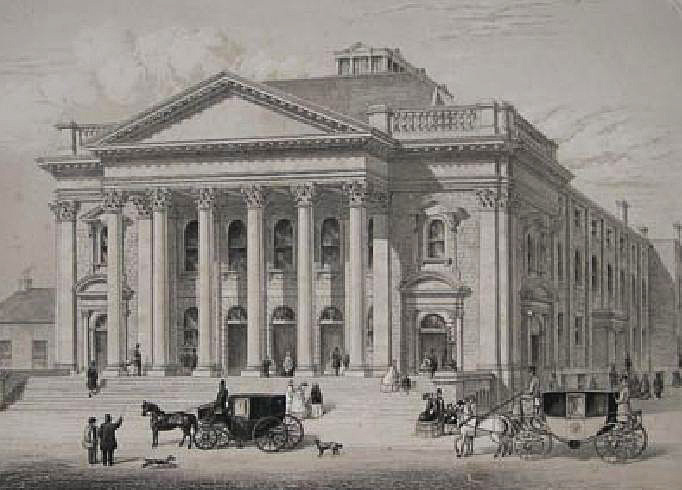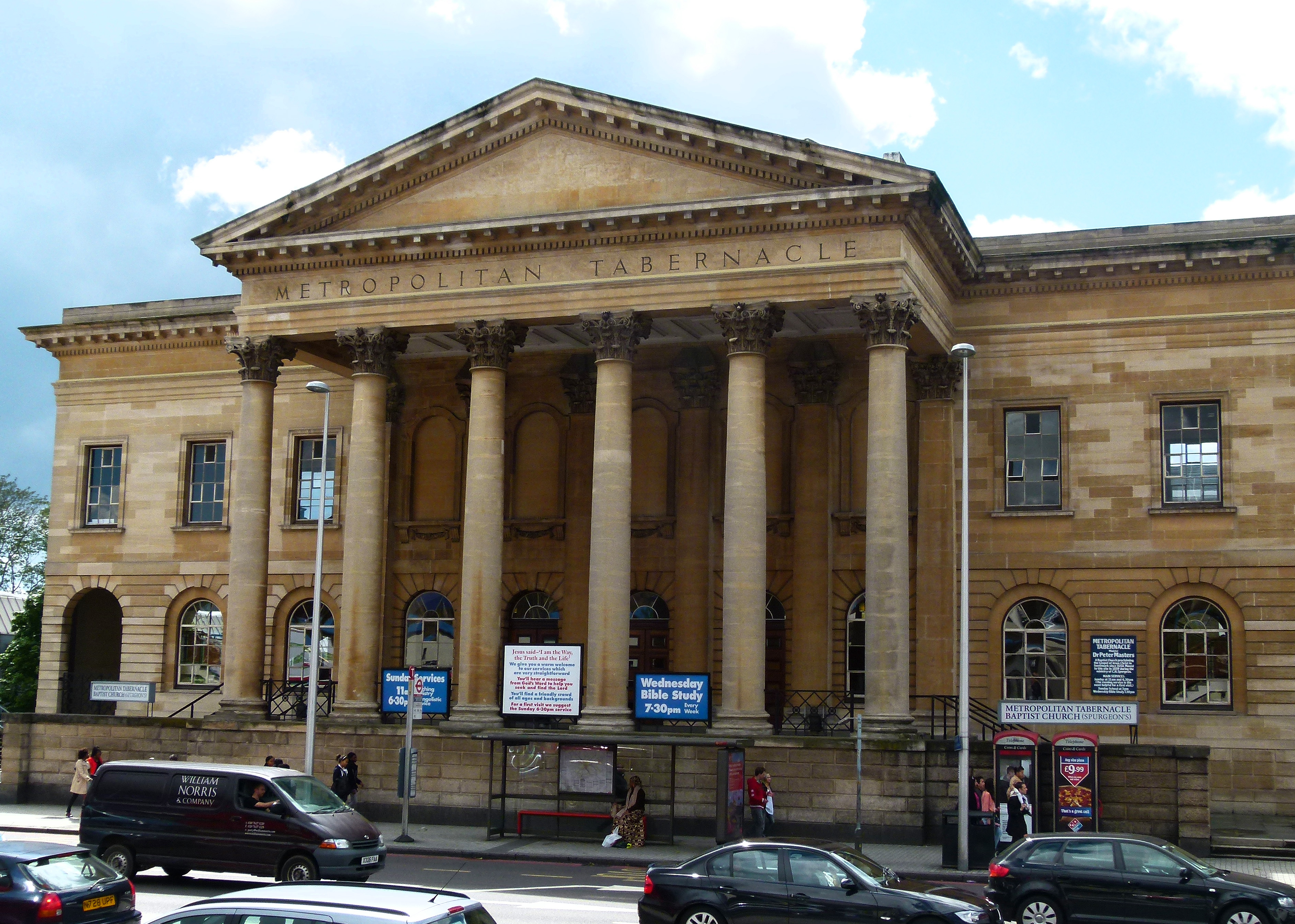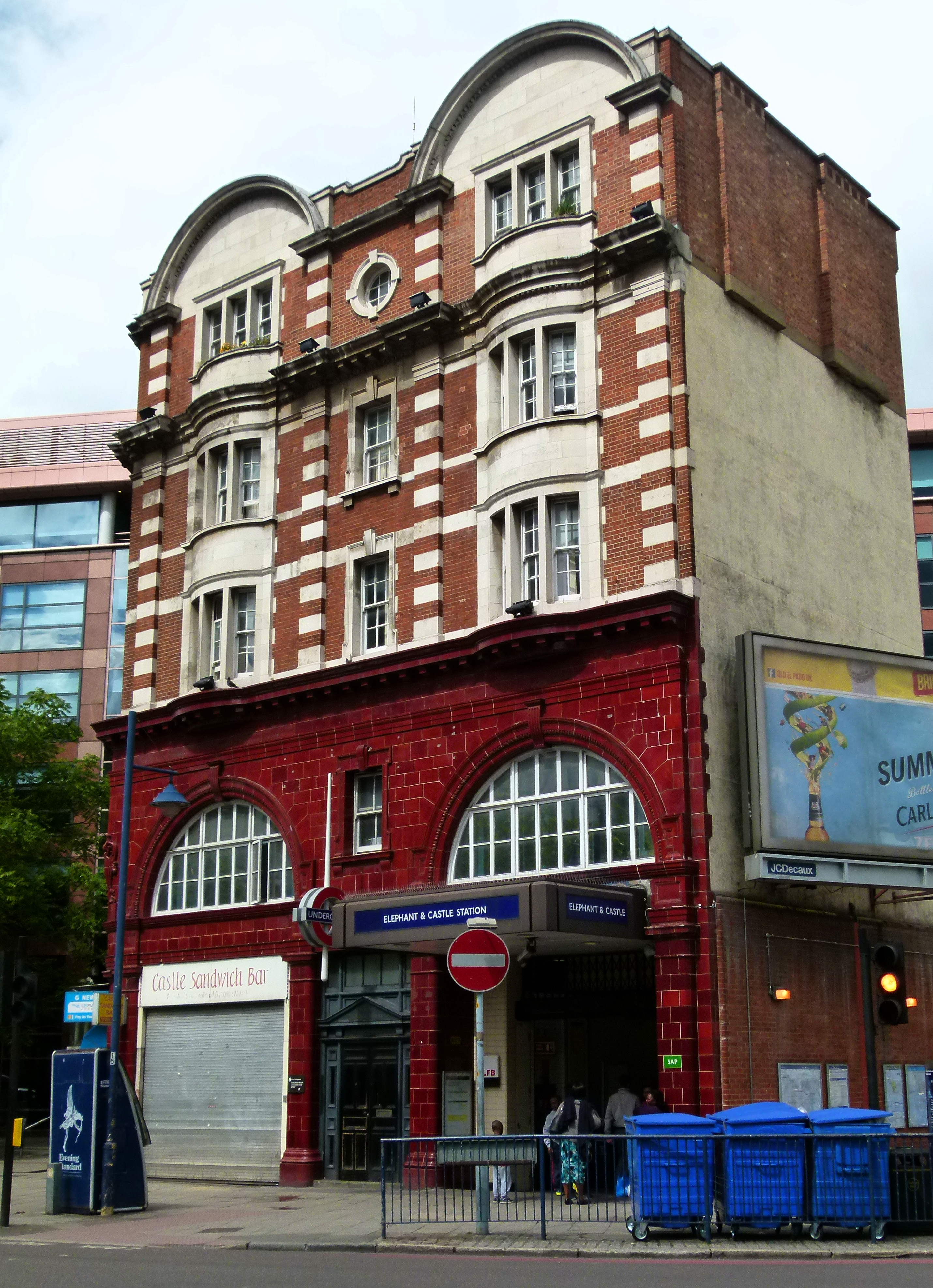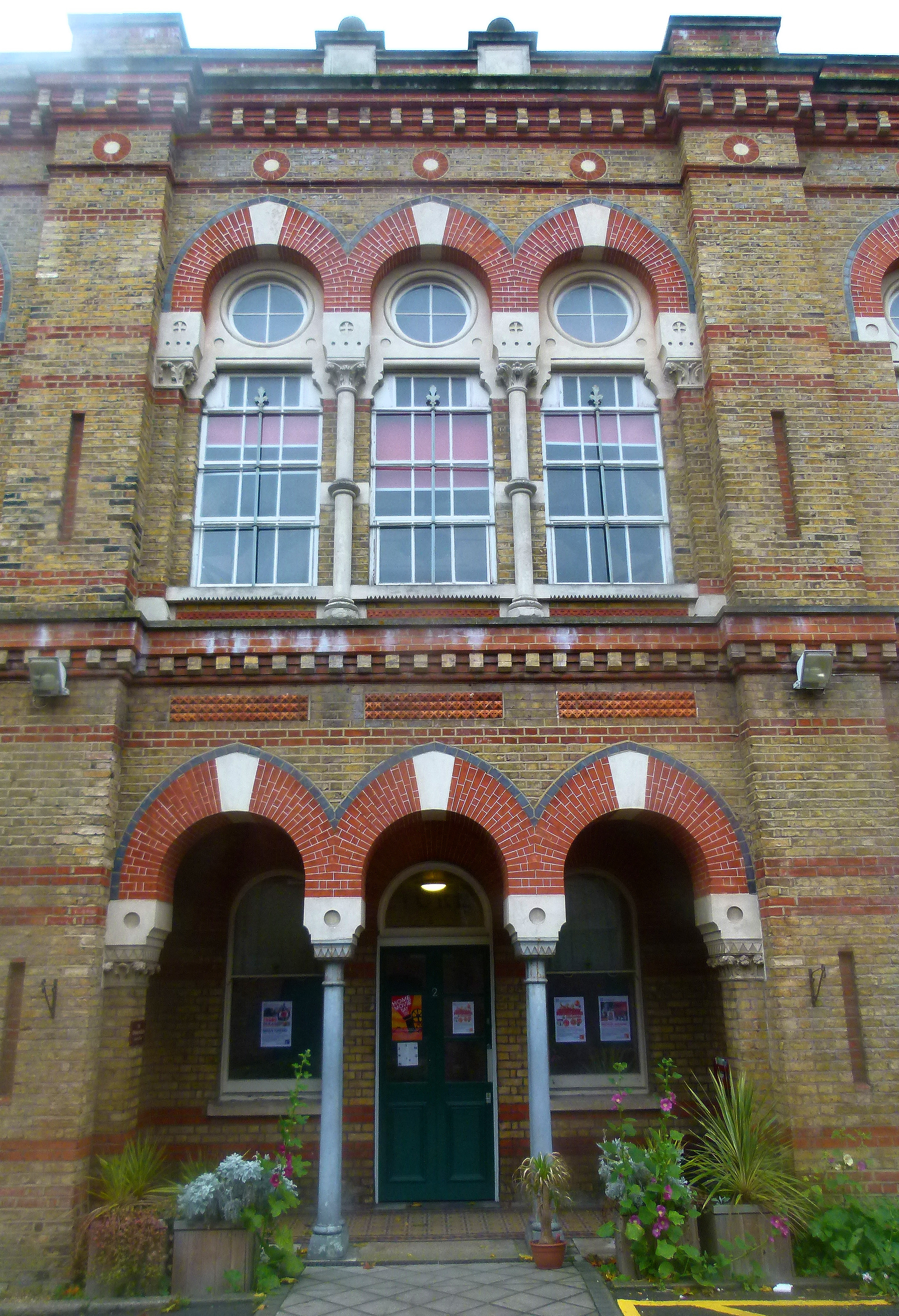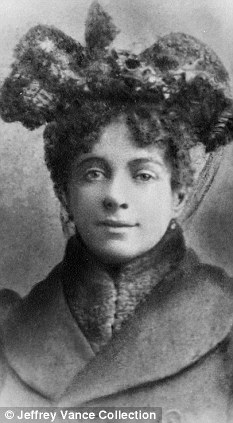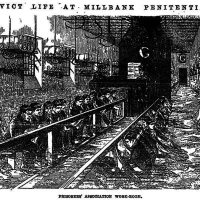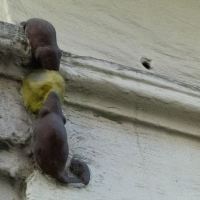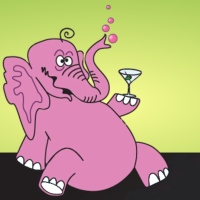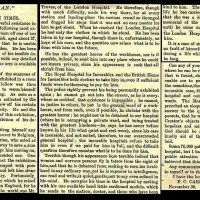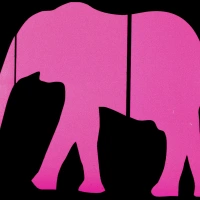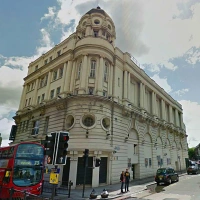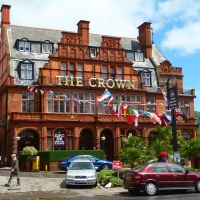When Buddy came to London
Exactly 60 years ago today, the world lost an early rock and roll icon: Buddy Holly.

Buddy Holly (image: Wikipedia)
During his short life, Buddy- who was born in Lubbock, Texas in 1936- made a huge impact on music and left a legacy which would go on to inspire and influence countless future stars.
*
In March 1958 Buddy Holly and his band, The Crickets (who were made up of Niki Sullivan, Jerry Allison and Joe Mauldin) embarked upon a UK tour.
The very first show they played was on the 1st of that month and took place at the former Trocadero Cinema which was located on the New Kent Road, Elephant and Castle.
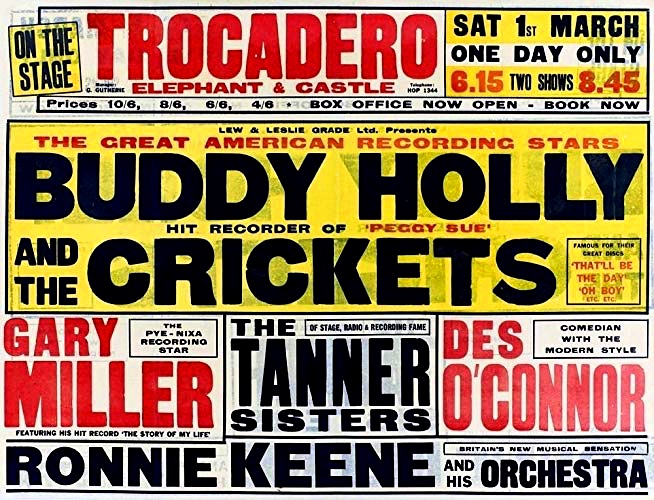
Poster advertising Buddy Holly at the Crickets at the Trocadero, Elephant and Castle, 1958
The image below shows Buddy backstage during rehearsals at this now long-lost venue.

Buddy Holly at the Trocadero, 1958
Whilst in London, Buddy and The Crickets stayed at the Cumberland Hotel near Marble Arch.

The Cumberland Hotel
Apparently Jerry and Joe were so impressed with the service at the Cumberland that they tipped the shoeshine boy £5- a very considerable sum at the time.
Just over a decade later, The Cumberland would accommodate another American music legend: Jimi Hendrix.
*
On the 2nd March 1958 Buddy Holly and The Crickets travelled north of the Thames to play at the Kilburn Gaumont State.

The former Gaumont State Cinema, Kilburn High Road (image: Wikipedia)
Situated on Kilburn High Road, the building is now home to the Ruach City Church.
On the same day, the band headed into the West End to appear in a live television broadcast of ‘Live at the London Palladium’. Their set included ‘That’ll Be The Day’, ‘Oh Boy’ and ‘Peggy Sue’.
To hear audio from that performance- along with still images- please click below:
The picture below was taken during the Palladium performance by photographer, Harry Hammond.
Thirty years later, the same image was used on posters advertising ‘The Buddy Holly Story’; a long running stage musical which opened in London in 1989.

Buddy Holly at the London Palladium, March 2nd 1958
The 1958 UK tour was compared by a then very young Des O’Conner with whom Buddy became friends.
When Buddy said he needed an acoustic guitar for the tour bus, the pair headed to Denmark Street– aka ‘Tin Pan Alley’- where, according to Des O’Conner, the young Texan tried out “about 17 guitars”.

Denmark Street as seen from Charing Cross Road
Buddy also visited the Whiskey A Go-Go club on Soho’s Wardour Street where the image below was snapped:

Buddy Holly at Whiskey A Go-Go, Wardour Street (image by Bill Francis, Time Magazine)
*
After their first stint in London, Buddy Holly and The Crickets headed on to many other towns and cities including Southampton, Sheffield, Newcastle, Nottingham and Birmingham.
On the 12th March they returned to the capital for three shows at the Croydon Davis, the East Ham Granada and the Woolwich Granada.

The former Woolwich Granada Cinema (image: Wikipedia)
After further concerts across the country, Buddy Holly and The Crickets returned to London on the 25th of March for their final UK concert at the Hammersmith Gaumont (now the Hammersmith Apollo).

The Hammersmith Gaumont (now the Apollo) today
*
Less than a year after his visit to Britain, Buddy Holly was back in the USA taking part in the Winter Dance Party Tour.
On the 2nd February 1959 he played at Clear Lake, Iowa.
Shortly after the gig, in the early hours of the 3rd February, Buddy crammed into a ‘Beechcraft Bonanza’ light aircraft alongside Jiles Perry Richardson Jr- aka the ‘Big Bopper’ – and the teenage sensation, Ritchie Valens.

Ritchie Valens and the Big Bopper
The trio had chartered the aircraft after experiencing poor weather conditions and problems with the tour buses and saw it as their best chance of getting to their next destination- Moorhead, Minnesota– as quickly as possible.
The aircraft took off in light snow at 12.55am but quickly encountered difficulties and plummeted to the ground just after 1am.
All on board died instantly.
Buddy Holly was 22 years old. The Big Bopper was 28 and Ritchie Valens was just 17.
Please click on the clips below to hear these three musicians in their prime….
The Big Bopper: Chantilly Lace (broadcast autumn 1958)
Ritchie Valens: La Bamba (released October 1958)
Buddy Holly: It Doesn’t Matter Anymore (released January 1959)
***
Be sure to visit my new website; robslondon.com! And don’t forget to check out my YouTube Channel, where you’ll find exciting videos all about London’s history and hidden stories.
A History of the Elephant & Castle (Part Two)
This is the second part looking at a history of the Elephant and Castle area of south London. To read the first instalment please click here

The Elephant at war
Being a major transport hub with a large civilian population, the Elephant and Castle was bombed heavily during World War Two.
The worst raid to hit the area took place on the 10th May 1941, when bombers deliberately targeted the south London district in order to create a ferocious firestorm which rapidly engulfed the Elephant.
After the war much of the Elephant lay in ruins, a shadow of its pre-war days when Londoners had flocked there to indulge in its many shops and places of entertainment.
A concrete renaissance
For over a decade, the Elephant remained pretty much in tatters, pitted by numerous bomb craters which provided exciting playgrounds for local kids.
In March 1958, the down-at-heel area received a welcome dash of American glamour when rock and roll star, Buddy Holly played to a huge audience at the Elephant and Castle’s Trocadero.
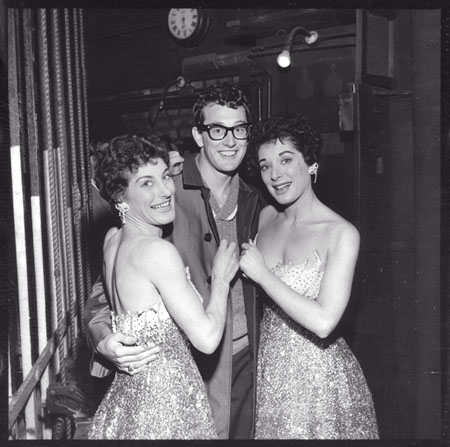
Buddy Holly, backstage at the Elephant & Castle Trocadero, March 1958. (Image by Bill Francis, from Patrick Sweeney website)
To read more about Buddy Holly’s time in London, please click here.
*
Meanwhile, behind the scenes, town planners were hard at work, drawing up plans for a massive redevelopment of the area… for Elephant and Castle was about to become a huge canvas for some of London’s most prominent post-war architecture.
The importance of the vast rebuild was summed up in 1956, when the London County Council stated:
“The Council regards the Elephant and Castle as one of its most important comprehensive reconstruction projects. A unique opportunity is presented for creating a new shopping, business and recreational centre for south London, for effecting major traffic improvement and for realising fine, civic design.”
The new road-layout was the first part of the scheme to be implemented, with two huge roundabouts stamped down during the 1950s.
This prominent road system was highly representative of the mood of planners at the time, who envisioned a future in which the motor car would be king.
Consequently, little thought was given to those who had to traverse the Elephant on foot and, to this day, pedestrians are forced to cross the area via a series of gloomy, narrow subways.
It was during the 1960s that the majority of the Elephant was rebuilt; the architects’ love affair with concrete and stark urban planning resulting in the heart of the district evolving into a landscape more akin to communist East Berlin…
The very first building to be completed at the new Elephant was the Faraday Memorial; an avant-garde electricity sub-station, clad in stainless steel and plonked in the middle of the northern roundabout.
Unveiled in 1961 as a taste of things to come, the Faraday Memorial can still be seen in its original location, un-disturbed by the many millions of vehicles which have roared around it during the past fifty years.
Next to pop up was Alexander Fleming House which opened in 1963.

Alexander Fleming House. Now known as ‘Metro Central Heights’, the exterior of this 1960s development has since been fitted with blue and white cladding. (Image- Design Museum)
Originally designed as a triple set of office blocks, Alexander Fleming House has since been converted into luxury apartments and renamed Metro Central Heights (or, as some like to jokingly call it, Metro Sexual Heights; a reference to the many young, urban professionals who now reside there!)
The modern trio of towers was designed by Erno Goldfinger, the infamous architect noted for his bold, uncompromising buildings… and egotistically fierce temper!
To find out more about the curmudgeonly Goldfinger, please click here for my earlier post on the ‘Trellick Tower’ which is widely regarded as his true masterpiece.
*
Lost cinemas
Goldfinger would go onto wield great influence over the Elephant and Castle.
In 1966, he incorporated an Odeon cinema into Alexander Fleming House… which was rather fitting considering the complex was built on the site of the former Trocadero which had been demolished a few years after Buddy Holly’s celebrated visit.
Designed in the Brutalist style, the modern Odeon contained seats for over 1,000 movie-goers.
Sadly, the cinema was demolished in 1988 which is a real shame as, given current trends, I have a feeling it would have found a new lease of life as an independent picture-house had it been allowed to remain.
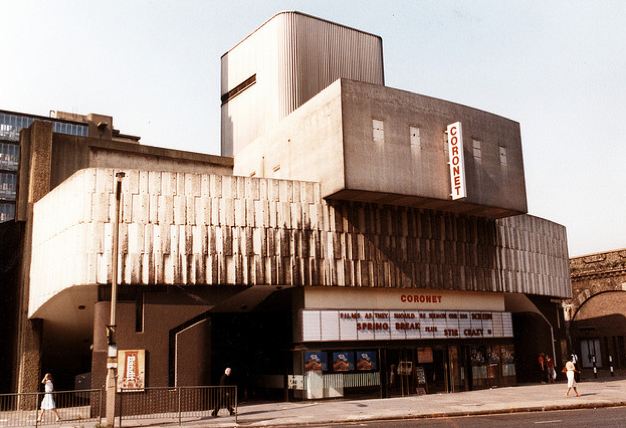
The Odeon at Elephant and Castle in 1983- by which point it had been renamed the ‘Coronet’ (many thanks to flickr user dusashenka for this rare image)
*
Tickled pink
In 1965, yet another Goldfinger creation was unveiled in the area… the Elephant and Castle Shopping Centre.
At the time, this new building was revolutionary; the first covered shopping complex in Europe.
Locals however who, for generations had patronized traditional local shops and markets, were slow to embrace the new concept.
When the shopping centre first opened, trade was painfully slow with just 29 out of 120 shop units being occupied.
Originally providing three floors for trade, it quickly became clear that this was one floor too many.
In 1978 the centre was purchased by Ravenseft Properties who promptly converted the third level into office space. As a spokesman for the company said at the time, “one has to do something when one has inherited such a horrible asset!”
In 1990, the powers that be thought it would be a good idea to paint the Elephant and Castle shopping centre bright pink, a colour which remained on the building until very recently.
I’ve often wondered what the idea behind this lurid scheme was. Not that I have anything against pink, but I was under the impression that a ‘pink elephant’ was something one only saw after a few to many sherries!
Some rather creepy pink elephants can be seen in the following excerpt from the 1941 Walt Disney classic, Dumbo, in which the lovable little elephant hits the booze rather too hard…
The Heygate Estate
By far the largest post-war project to grace the Elephant and Castle was the vast Heygate Estate, which was completed in 1974 and provided homes for 3,000 people.
Designed by Tim Tinker, the Heygate Estate was very much a product of its time; a huge housing scheme conjured on an incredibly ambitious scale, and designed with the best of intentions in mind.
Aiming to make the estate an oasis of calm away from Elephant’s characteristic roar of traffic, Tim Tinker placed the tallest of the tower blocks around the perimeter, encircling and shielding smaller accommodation and areas of greenery within the middle.
When viewed from above, it is indeed surprising just how much greenery the Heygate encompassed.
However, as with many estates, the utopian ideal quickly became sour, with the modern innovations having quite the opposite effect of their intended purpose.
The towering apartment slabs isolated their inhabitants, slicing off communities rather than drawing them together, whilst the windswept walkways and secluded communal areas provided fertile breeding ground for crime and anti-social behaviour.
Unfortunately, unlike other examples of London Brutalist architecture- such as the Trellick Tower, National Theatre and Barbican Centre- the Heygate has received no revival and is currently undergoing demolition.
Thanks to the large amounts of asbestos present, the destruction is a slow process, not expected to be completed until 2015.
At present, the drawn out wrecking of the Heygate has made the old estate quite an atmospheric place; a vast, inner-city chunk of quiet decay, rather like something out of a post-apocalyptic film.
Despite being eerily deserted, at the time of writing, a tiny handful of residents are refusing to leave their homes on the Heygate in protest at Southwark council’s compulsory purchase order.
This small but hardy bunch include an elderly couple with a leasehold… both of whom are in their 80s and, like their small band of remaining neighbours, see the Heygate as their rightful home…
*
The Elephant on Film
Thanks to its present state, the Heygate has proved a popular location for movie makers in recent years, with Southwark Council raking in a substantial £91,000 in filming fees since 2010.
Two films to make substantial use of the estate are Harry Brown and Attack the Block.
Released in 2009, Harry Brown stars Sir Michael Caine who, just like Sir Charles Chaplin a generation before, spent his tough working-class childhood in the Elephant and Castle area.
In Harry Brown, the popular actor plays a pensioner after whom the film is named; an ex-soldier living out his twilight years on a hellish council estate.
One night, Harry has to rush to hospital, where his wife is dying.
Despite the emergency, he is too terrified to take a short-cut as the subway in question is plagued by gangs and drug-fuelled violence. His failure to take the shorter route means that he is unable to be at his beloved wife’s bedside when she passes away…
This, coupled with the murder of his friend who also resided on the estate, leads the pensioner to turn vigilante…a very grim film indeed.
*
Being a comedy, Attack the Block is one of the more cheery films to emerge from the Heygate Estate.
Released in 2011, this movie centres on a gang of youths… who find themselves having to defend their turf against an alien invasion!
As can be seen in the following trailer, the Heygate Estate played an integral part in the story:
More recently, the Heygate has been used as a backdrop for World War Z; a horror film in which the world is gradually taken over by zombies.
Due for release in 2013, the film stars Brad Pitt, who spent time on the estate filming some rather terrifying looking night scenes…
*
The Heygate is not the only the only area of the Elephant and Castle which has been used as a filming location.
In the 2011 film, The King’s Speech, Iliffe Street, just south of the junction towards Kennington, was used to represent a road in fashionable West London.
In 1968, the then brand new shopping centre featured in The Strange Affair which starred Michael York.
In 1987’s gangster film, Empire State, the young protagonist and his moll live in Draper House, their balcony overlooking the Elephant’s large twin roundabouts.
In 1982, the Elephant loaned its streets to the music industry when Brook Drive– which lies just west of the junction behind the Metropolitan Tabernacle, was used to film the video to the much-loved hit, Come on Eileen by Dexy’s Midnight Runners.
Please click below to view:
In the past year, I have had two fares to Brook Drive and, in both cases, each of the passengers stated how chuffed they were to live on the same street where this hit, which seems to be played at every single wedding reception, found a home for its video!
Below is a photo of the Brook Drive newsagent as it appears today:
Also in 1982, Dexys Midnight Runners released The Celtic Soul Brothers which was filmed on the other side of the Thames at the Crown Pub in Cricklewood- please click here to read more).
*
All change at the Elephant
Today, the Elephant and Castle is undergoing its biggest change since WWII.
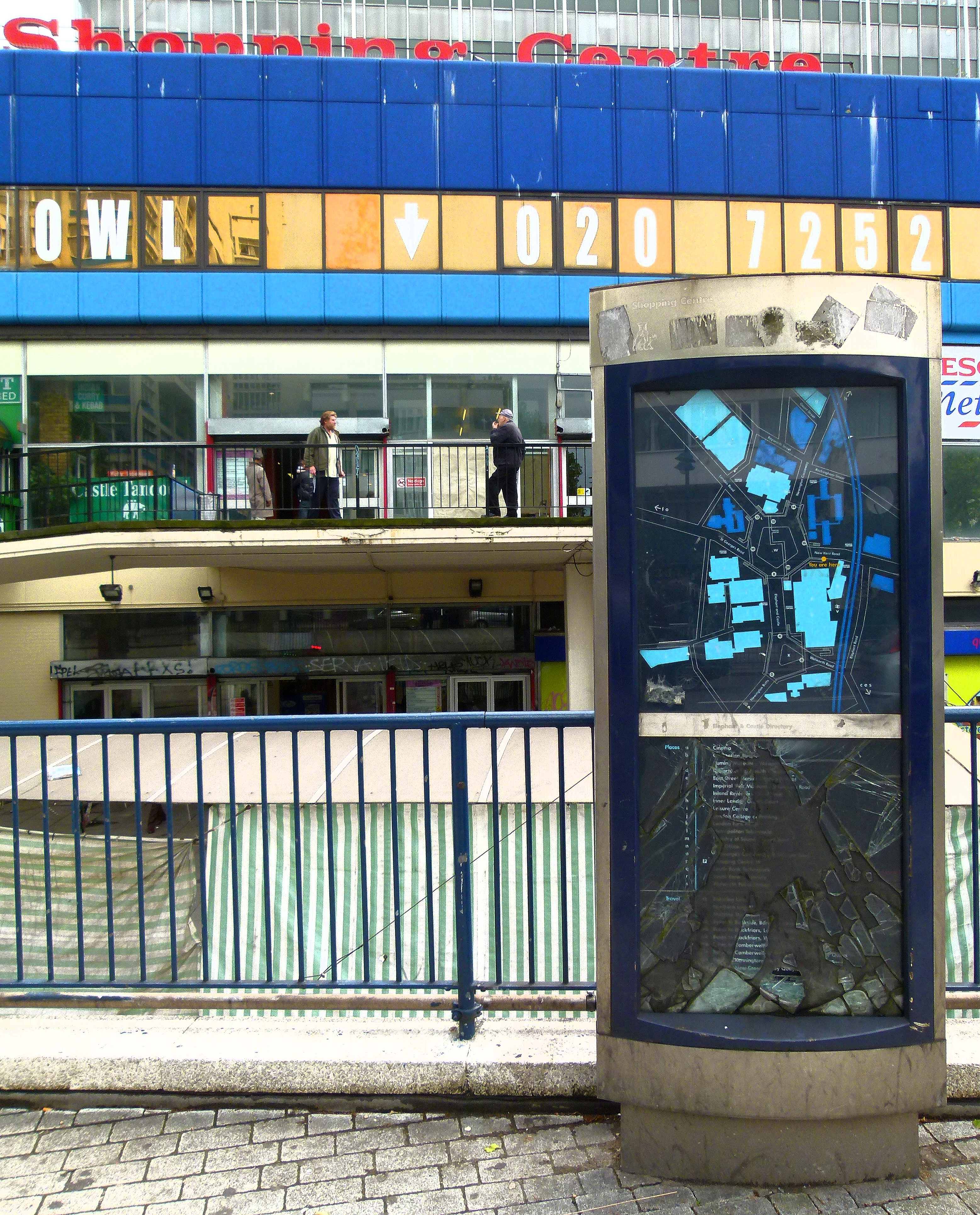
A smashed up information board outside the Elephant shopping centre. Hopefully, such ugly scenes will soon be a thing of the past…
As part of a £1.5 billion scheme, the 1960s shopping centre is due to be demolished and replaced with a pedestrianized market square and green open spaces.
As for the Heygate Estate, once that has been fully knocked down, the empty land will be replaced with 2,500 new homes, of which it is sad 25% will be “affordable”… I suppose that means the other 75% will be unaffordable then…
Overall, the change at the Elephant is estimated to take some 15 years.
At present, the most prominent sign of this slow evolution is the Strata Building; a new tower which replaced Castle House and has been nicknamed by some Londoners as the ‘Lipstick’ building.
The Strata contains 310 luxury housing units, retail space at ground level and, most famously, three wind-turbines on its roof which are used for powering a small percentage of the tower’s utilities.
Wether of not these new developments will last longer than their 1960s predecessors remains to be seen… however, one thing is for sure- they are merely the next stage in the long and varied history of the Elephant and Castle.
***
A History of the Elephant & Castle (Part One)
As well as being one of London’s major transport hubs, the Elephant and Castle (or, more simply, the ‘Elephant’ as locals like to call it) is one of the capital’s more peculiarly named areas.
Thanks to its post-war jumble of tower blocks, roaring traffic and gloomy pedestrian subways, Elephant and Castle has become rather unloved over the years… which, when you consider the area’s long and fascinating history, is a sentiment nothing short of travesty.
*
Before the Elephant
Before acquiring its unique name, the land which would eventually become the Elephant and Castle was occupied by a village known as Newington which came under Walworth; a manor listed in the 1086 Domesday Book as being part of the Archbishop of Canterbury’s portfolio.
Today, the name of the early settlement lives on in two roads- Newington Causeway and Newington Butts which lie either side of the present day junction.
Many historians believe that ‘Butts’ is a reference to archery butts; a strip of land dedicated to practising bow and arrow firing.
During the Medieval era, such exercise grounds existed all over the kingdom thanks to a law drawn up in 1252 which stated all Englishmen between the ages of 15 and 60 were required to own a bow and to practice their shooting skills every Sunday!
*
The Elephant stomps in
The Elephant and Castle eponym evolved thanks to a tavern which established itself in the area (to this day, a pub by the same name operates on the junction’s northern roundabout).
Although the image of an elephant partnered with a castle was fairly common at the time, what the pub’s owner was precisely referring to when they named their boozer remains a mystery.
Perhaps it was an allusion to a heraldic symbol? Or an early chess piece?
Then again, the landlord may have been aligning the tavern with the Worshipful Company of Cutlers; the guild responsible for regulating the manufacture of weapons and cutlery who, for many years, incorporated ivory into the handles of their wares- hence their coat of arms bearing the Elephant and Castle icon:
Or perhaps the unusual name was a reference to the time when Louis IX of France presented King Henry III with an elephant as a gift; the donated jumbo being gladly received and placed in the Royal Menagerie which, in those days, was housed in the Tower of London.

A mid 13th century sketch of King Henry’s elephant, drawn by a monk called Matthew Paris (Image: University of Cambridge)
Sadly, this celebrated pachyderm somehow managed to wangle its trunk into a large rake of wine… an indulgence which evidently killed the sorry beast after three years spent in the tower.
At least it died happy…

*
A very early reference to the district’s now famous name can be found in Shakespeare’s comedy, Twelfth Night, penned circa 1601.
In the play, Antonio informs Sebastian that a good place to lodge for the night is “in the south suburbs, at the Elephant.”

William Shakespeare, one of the first writers to refer to the Elephant and Castle by its current name.
Although Twelfth Night is set nowhere near London (or even England), it is likely that Shakespeare slotted the name in as a cheeky local reference which most of the audience would have understood- the Bard’s Globe Theatre being situated just under a mile away from the area.
It is also possible that the allusion may have been included as an early form of advertising for the tavern, especially as it was within staggering distance of sinful Southwark’s playhouses and debauchery!
*
The area begins to boom
In 1760, a blacksmith’s workshop in the village was enlarged and converted into a tavern which adopted the Elephant and Castle title.
The newly established premises gradually developed into an important coaching inn, with traffic and trade boosted by the opening of nearby Westminster Bridge (in 1751) and Blackfriars Bridge (in 1769).
With London’s road network expanding around these two new and vital river crossings, the Elephant and Castle quickly became an important hub in the capital’s burgeoning transport network.
In 1861 and encouraged by the Elephant’s growing prominence, the Reformed Baptist church decided to build their main place of worship in the area- the Metropolitan Tabernacle.
As well as the growing importance of the Elephant and Castle, the Reformed Baptists also chose the location as it marks the approximate site where the ‘Southwark Martyrs’ (a group of Protestants executed during the reign of Mary I for their faith) were suffered the brutal fate of being burnt at the stake.
When it first opened, the Metropolitan Tabernacle had a congregation numbering over 5,000 people.
Despite being destroyed by fire in 1898 and Nazi bombs in 1941, the main front portico survived and remains a prominent Elephant and Castle landmark.
Rebuilt in 1957, the interior now hosts religious sermons which are broadcast on Sky Television every Saturday afternoon.
*
The role of Elephant and Castle as a major transport hub developed even further with the arrival of the railways (in 1863) and the Underground in 1904- with the Bakerloo line making the Elephant their southern terminal.
The Elephant also became a vital cog in London’s sprawling tram network.
Thanks to its multitude of transport links, Elephant and Castle grew into a major shopping and entertainment destination during the early 20th century, earning it the nickname; the ‘Piccadilly of South London.’
A short, moving film from the early 1950s entitled ‘The Elephant Will Never Forget‘ which details the end of tram services in London can be viewed below:
*
Glamour at the Elephant
Two of the most popular destinations in the Elephant’s glitzy heyday were the large department store, William Tarn and Co, and the mighty Trocadero cinema.
Opened in 1930, the Trocadero (which stood on the present site of the modern Elephant and Castle pub), was a glorious picture-house, capable of seating 3,000 movie-goers.
It also boasted Europe’s largest Wurlitzer organ.
In 1932, the Trocadero was joined by a second cinema; the Coronet; an art-deco 2,000 seater picture house which opened up on the opposite side of the road after being converted from the Victorian built, Theatre Royal.

The Theatre Royal (aka the Elephant Theatre), originally built in 1882 which later went onto become the Coronet cinema. (Photo: The Coronet website)
The theatre (known then as the ‘Elephant Theatre’) can be seen in the following 1920s clip, London at Night, filmed a few years before its conversion to a cinema:
Despite the glitz, the Elephant was still home to many of London’s impoverished, including a large number of down and outs, footage of whom was also included in London at Night:
Although the Elephant’s colossal Trocadero has long since vanished, the Coronet is still going strong, now employed as a venue for many varied events ranging from club nights to boxing.
*
A very famous resident
Despite being no longer able to provide an evening out at the pictures, Elephant and Castle is now home to The Cinema Museum which can be found on Dugard Way.
Although discreet (at present, if you wish to visit, a tour must be booked), this museum maintains a vast collection of historical cinematic artefacts ranging from the 1890s to the present day; everything from usher’s uniforms and vintage cinema fittings, to publicity shots and rare celluloid reels.
The Cinema Museum is housed within a rather extraordinary building… it was once the administration block for Lambeth’s former Victorian Workhouse.
In the late 1890s, one of the many poor Londoners to spend time within this depressing institution was a young child called Charles Spencer Chaplin.
A few years later, and under the more informal version of his name, this former young workhouse inmate would go onto become the world’s first movie superstar… Charlie Chaplin.
Charlie was very much a local lad, born less than half a mile away from the Elephant on East Street which, to this day, is still home to a popular market.

A quiet East Street today, the road which saw the birth of Charlie Chaplin in 1889. (Image: Google Street View)
Growing up in South London, Charlie’s childhood was defined by crushing poverty.
Along with a chronic lack of cash, his mother, Hannah Chaplin, also suffered from poor mental health; a condition which led to her spending time in the Bedlam Lunatic Asylum.
Today, you can still visit the hospital in which Charlie’s mother was incarcerated… it is now the Imperial War Museum, a short walk away from the heart of Elephant and Castle.

The Imperial War Museum, Lambeth- the former Bedlam mental asylum where Charlie Chaplin’s mother was interned (image: Wikipedia)
Charlie Chaplin’s childhood experiences of growing up in the area would later influence his famous film work which was characterized by a mixture of working-class humour and heart-breaking pathos, with those in authority often portrayed as bullying jobsworths.
This influence is well demonstrated in his 1921 masterpiece, The Kid.
In this feature length silent film, Charlie’s ‘Little Tramp’ has raised an abandoned child from infanthood, the pair very much becoming father and son.
However, when the authorities discover the pair living in hardship , they see fit to cart the child away…
Although filmed in Los Angeles, the following famous sequence contains profound and deeply moving echoes of Chaplin’s south London childhood, especially the desperation he would have experienced whilst being forcefully parted from his mother at the gates of Lambeth workhouse.


